Photography is going through a very popular phase at the moment. Digital sensor technology has almost matured to the level where, as in the film days, it is the features of the camera body that determine purchases, e.g. size, speed, flexibility and complexity. Finally the quality of output is generally more to do with lenses than the sensor.
There is also a wide range of good quality camera systems available today with many magazines and Internet pages dedicated to comparing, contrasting and convincing consumers to buy the latest camera or add a particular lens to their arsenal. The premise of most manufacturers is that if you use the same equipment as the photographers you admire, your pictures could be just as good.
I have been equally susceptible to fashion and over the years and have amassed a fair selection of my own gear. With the huge development and improvement of digital sensors and processing throughout the noughties, I felt the need to keep up. Each new digital camera release has been more responsive and has delivered better quality pictures.
However I was starting to question whether I was the photographer or just the editor.
Therefore about a year ago I made a decision to get off this tread mill and focus on the art of taking pictures. I wanted to get back to basics and be more creative. I wanted to think more carefully about each picture and make all the decisions. I also missed those early days when it was just me and a manual camera. That camera came everywhere with me. I often had it in my hand, I knew every one of its simple controls by touch alone and could guess the right shutter/aperture/focus settings before even lifting the camera to my eye. I shot like the old street masters using the zone system to focus. I was the photographer and the camera was my tool.
I wanted this again and there was only one choice.

Way up in the sky. This is one of the first proper pictures I took with the Leica. I thought, I'm going to like this camera!
Back in the day
Back in the late ‘90s I had a succession of film cameras including the woeful Canon EOS-50E and wonderful Ricoh GR1. However around 1998 I decided to get serious and purchased a used Leica M6 and 50mm Summicron f2.0 lens.
As often the case, it was a friend who convinced me. I loved the build quality and simplicity of the camera and the way it felt just right. I also loved the pictures I was seeing. They were different and had tension and emotion. They captured something dynamic and exciting that was missing in most of the pictures I was taking. They moved and inspired me to take more pictures of the people and the world around me.
One of the key elements of the Leica was its ability for stealth. I realised quickly that with a Leica I could photograph a scene without disturbing it. This allowed me to capture the real scene or a subject’s true face and not their ‘camera face’. Often using the zone method I could prepare for the shot with the camera on my lap or by my side. At the right moment I could lift, frame, shoot and down again often without anyone realising. Due to the camera being a ‘rangefinder’ (which lacks the mirror box of an SLR) the camera makes only a soft ‘click’ which is discreet and lost among background noise. In contrast an SLR is big, obvious and noisy and people react immediately on seeing one.

James, Belfast
Another element of the rangefinder system is that it can be used handheld at low shutter speeds. You can shoot as low as 1/15th of a second with a Leica and get sharp shots. This feature gives the Leica another advantage in the stealth game – no flash. The Leica is known as the available light camera and while you can buy a flash, no one uses one. Combined with a fast lens (f2.0 or greater) you can comfortably shoot indoors and in gloomy light and still get good shots. This could not be said of SLRs of the same era which were generally limited to 1/50th of a second due to the vibration introduced by the mirror arrangement.
The last element is the lenses. Leica has made a large range of lenses over the years and whilst none are what you might call poor most are great and some are exceptional. They are often the sharpest lens you can buy, and excel over other lenses in their wide open (maximum aperture) performance. However it is not only this that makes them special in my opinion. There is something about the way a Leica lens paints a scene that just makes pictures look more interesting than those taken with other lenses. Obviously this is a highly subjective view but it is borne out by countless photographers and viewers over the years. From my perspective there are two things that make this difference.
Firstly it is the way out-of-focus details are rendered. Often there is a painted quality that feels natural and dreamy. Secondly it is the way a scene or object transitions from being in-focus to out-of-focus. With many cameras this can be harsh with the focus falling off a ledge at a certain depth in the scene. With a Leica lens that transition is gentle, natural and progressive and I believe this accounts for the wonderful three dimensional look Leica pictures tend to exhibit.

Smile for the camera
With Leica in hand I was exploring the world, socialising with friends, people watching and capturing everything. I would occasionally process my own film although I was not very good at it and often print the results in my attic (which I was much better at). However being young one thing that frustrated me was the delay induced through the development process. I was not quite getting the pictures I wanted and it took a lot of time (and cost) to learn the craft and improve.

Paper maker, La Marche, Italy.
It was about this time that digital SLRs started to become a realistic option. With the release of the Canon EOS-10D you had a digital SLR that hit the sweet spot of affordability, quality and speed. I bought one and achieved that instant gratification I was looking for.
The Leica was set aside as while I loved shooting with it, the effort required for development, printing and scanning became too much next to the DSLR.
Eventually in one of those ‘if only I’d known’ moments that seem to have plagued my life I sold it. I did however keep the lenses for a while hoping that Leica would produce a digital M body. They eventually released the M8 in early 2006, however at almost £3000 and packing an APS-H sized 10 megapixel sensor it seems poor value against my then current Canon 5D.
Soon after Leica claimed that a full frame digital M was not possible and in yet another ‘if only I’d known’ moments I sold the rest of my lenses. At the time I was fairly pleased as I made money on all of them. However today I would have to spend at least twice what I sold them for to buy them back!

Kids at the fare.
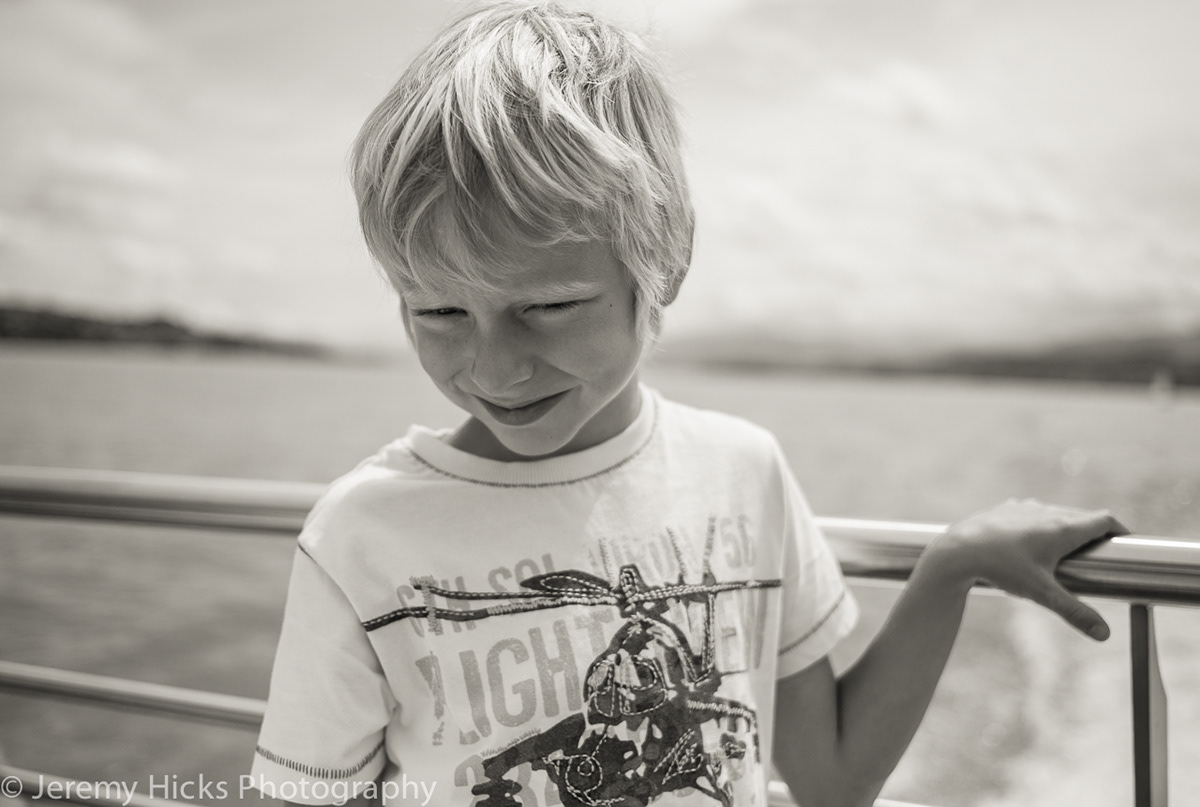
The Son in my eyes
Of course we all know that Leica did the ‘impossible’ having sold a bunch of upgraded M8.2s and announced the full frame M9 on 09.09.09. I was delighted! A full frame 35mm sensor, at a more respectable 18 megapixels and with the same Leica build quality and ergonomics. Then I saw the price and my jaw hit the ground. If I thought the M8 was expensive the M9 at nearly £5000 was just impossible.

I can see the bottom! Lake Zurich, Switzerland.
Time to stop
Wind the clock forward to spring 2012 and for the first time, I’m not first in line to upgrade to Canon’s latest 5D Mark iii. My 5D Mark ii was after all ‘fit for purpose’ but was getting less and less use. For a start it seems to be getting heavier with every passing year so I was finding less motivation to take it places and secondly I just felt like a complete dork with it slung on my shoulder. I longed for the simple days of my M6 and having taken over 40,000 digital photographs in the space of 8 years I was kind of over the whole “shoot everything that moves” thing.
Some of my friends were getting back into Leica and extolling its virtues every time the subject came up. However I was highly skeptical thinking anyone who spends this kind of money on a camera and lens needs to justify it somehow. However I was intrigued and again I started to like the pictures I was seeing.
I was also longing for the rangefinder mechanism of shooting, hyper-focal focusing, the manual interaction between man and tool, the simplicity, the creativity and something a bit more discrete than an SLR. Also I wanted something a bit cooler!

Come on i'm going!
Then an opportunity came up that would allow me to dip my toe in the water. One of my friends was upgrading to a Leica M9P and offered me his M8 at a price were I could sell it again without losing too much if I didn’t like it. It was an early model but in great condition and had previously been owned by another friend of ours from new. So I knew its history. But I was undecided, it was old technology (6 years old is prehistoric in digital camera terms), it was only 10 megapixels, it was not full frame, it had issues with infrared and it was not very good in low light. It wasn’t even that cheap!
However I had kept one lens from my M6 days. It was not a Leica lens but a Voigtländer 28mm F1.9 Ultron however with the crop factor of the M8 it makes it almost a 35mm. I wasn’t expecting much from this lens but it would get me started while I decided what the future held.

Watching the buskers, Rapperswil, Switzerland

Chatting
That was a year ago and since then I have used the Canon about twice and that was because I needed to use flash and shoot a lot of frames. The Leica has been with me almost everywhere. It does have its issues and limitations but I have to say I just love shooting with it.
The Voigtländer turned out to be pretty damn good actually, even with the Leica Thread to M adapter needed to mount it. It is reasonably sharp, renders bokeh nicely and has some of that three dimensional pop that Leica is famous for. It’s supposed to be a bit low on contrast but I never found this in my shots. The only weakness I see is some mild chromatic aberration in out of focus highlights and a tendency to flare when pointed at or near the sun.
I recently had the chance to compare it to the Leica 28mm Summicron ASPH which is reckoned to be one of Leica’s finest. Whilst the Leica 28 is certainly better in probably every respect the old Voigtländer is certainly not put to shame. Unless you pixel peep the differences wide open are subtle and by f5.6 they are both superb in their own way. I reckon the f1.9 Ultron is a bit of a star and often overlooked due to the poor performance of its newer M mount replacement.

What I am also seeing and very impressed with is the sensor on the Leica which is a CCD type. This is different to the CMOS sensors used in most other cameras including my Canons. It has its disadvantages such as being quite power hungry and a bit noisy in low light. However what makes the CCD sensor different is that it responds to light in a non-linear way. As the intensity of light reaching the sensor increases from dark to bright the value the sensor records does not increase by the same mount. In simple terms twice the input does not make twice the output.
This is similar to how film responds to light and this is why the pictures from the Leica M digital cameras do have a filmic look about them. I sure this is what Leica intended however there is probably a certain amount of coincidence about it too. I have compared many shots with my Canon 5D2 and whilst I always thought it technically impressive having now got used to the images coming out of the Leica the Canon now looks somewhat artificial. In a world of digital manipulation, CGI and retina displays the images from the Leica are just more realistic, more believable, more interesting.
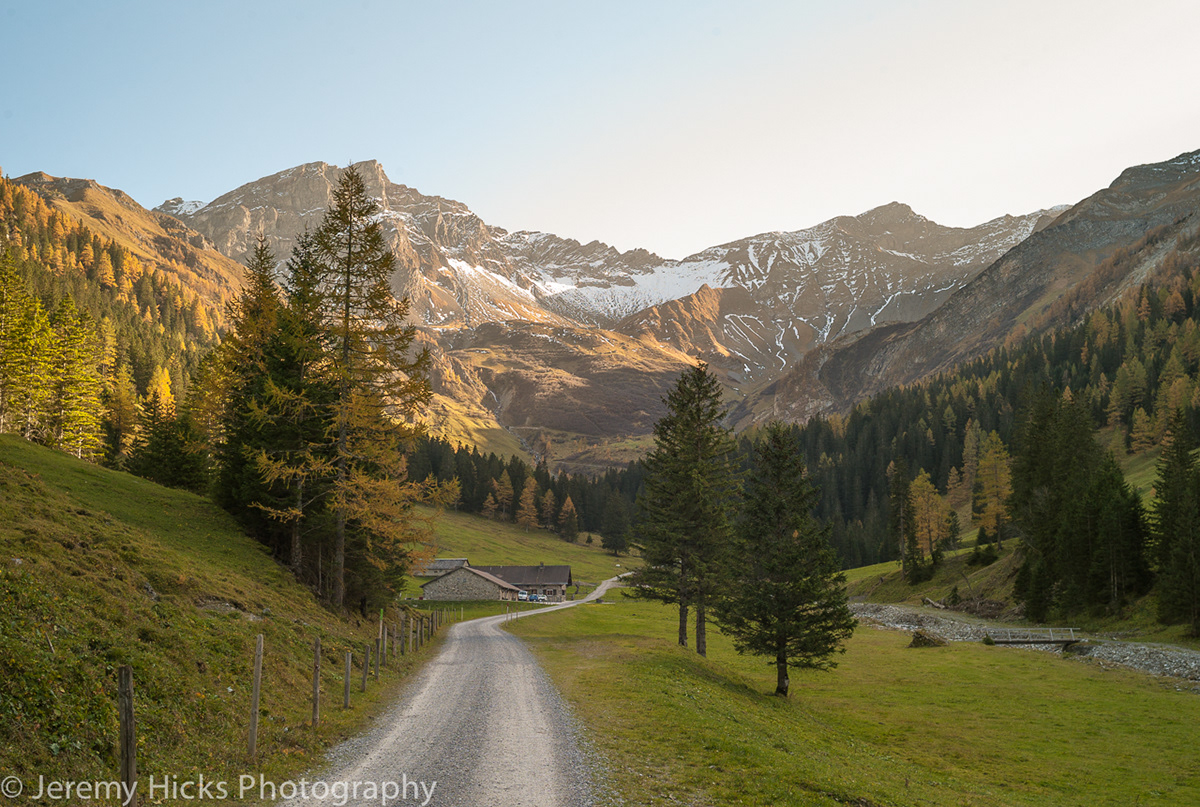
Liechtenstein
Freedom
‘One camera one lens’ was the title of this essay and I haven’t mentioned it yet. However I needed to cover at least some of my journey to bring this into context.
With my Canon I have a selection of good quality lenses including the 17-40mm f4L, 24-105mm f4L, 50mm F1.4, 85 f1.8. I have also in the past owned the 50mm f1.2L (which I hated) and the 70-200mm F2.8L (which was so heavy it nearly put my shoulder out). Then there is flash guns, filer holders, tripods, tripod heads, telescope adapters, bags, reflectors, more bags, etc.
The problem with this is three-fold. Firstly it all weighs a ton, secondly you don’t know what kit to take (or leave behind) and thirdly, if you do take more than one lens you never have the right one on the camera when you want to take a picture!
However for the last year I have been surviving with a single lens on my M8 and it has been wonderful. I have used it for portraits, landscapes and street photography. I don’t have to think about it, I just grab my camera and go. I have to work around its restrictions but I know it really well now and this is what I wanted when I started this journey. This is what I set out to achieve, simplicity and intuition.
What next?
Of course I am still a little bit of camera nerd and can’t help thinking about my ‘next lens’. I would really like to have a Leica lens on the end of my Leica which I think is fair enough. However I do not feel the need to build a collection for every situation that might arise.
The problem with an SLR is that you think you need to have all situations covered. Of course you need a wide angle zoom, and a fast 50. You need a portrait lens so 80 or 100 and you also need a walk about street lens, 24-70 seems popular. And before you know it you have more lenses than you can carry.
A question I often ask my friends goes along the lines of ‘if you could only have one ….. which would it be?’ This is true of sports cars, Swiss watches and of course camera lenses. Personally I would struggle to choose between 35mm and 50mm but I have been living with 35mm for the last 12 months and it’s been fine. I do miss having a 50 for portraits but if I had a 50 I would miss the 35 for landscapes. Can I have both??
Even when you settle on a focal length, which version? Leica has made eight different 50mm lenses and that does not count the versions of each model of which there is often 3 or 4. They have also made five 35mm lenses and again there are multiple versions of each. Most of these lenses have different designs and a different ‘optical fingerprint’. Some are highly prized for their rarity and unique look and some are often overlooked and therefore cheaper because they are old fashioned and technically inferior to modern lenses.

Young buskers, NYC
My work
If I consider my current journey and why I have chosen work this way it is clear to me that I want to produce pictures that have a particular look and feel about them. It's about mood and memory not sharpness or technical perfection. Mostly I can determine whether a picture works from its overall look without needing to zoom in and check details.
For me the most important element of the camera-lens package is how it renders. Most lenses are sharp enough to make a good picture unless there is something fundamentally wrong with them. What is wonderful is that there are a lot of great lenses out there to explore, each with their own unique character or flavour. Leica's knowledge in building lenses is legendary and their range contains everything from the softer, lower contrast 'classic' lenses to the modern razor sharp, high contrast aspherical lenses.
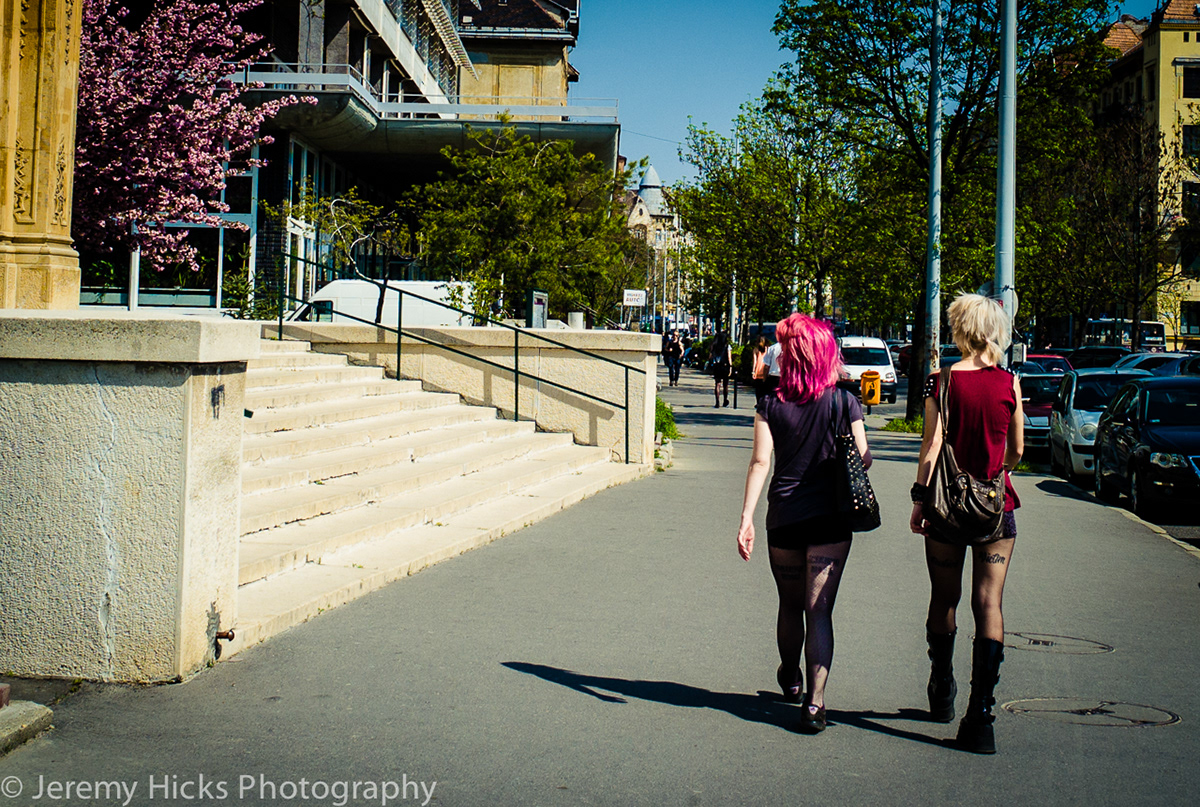
Buda girls. Budapest.
From my research, I tend to prefer the older lenses as they have a more nostalgic look although unfortunately this does not always make them cheap. Whilst the newest lenses are often the most expensive some of the older ones are even more expensive! What I find with newer lenses is that they are bitingly sharp when in focus and very diffuse when out of focus. However it is the transition that I am less keen on. Sharpness drops off a cliff at a certain depth in the image and leads to a more two dimensional composite look where the main subject is on one plane and the background is on another. I think this is especially true of the new 35 and 50 Summilux’s. They are technically brilliant but unfortunately for me a bit lacking in character.

Morning hair
Final thoughts
In today’s world it can be too easy to get knocked off course by the continual bombardment of ‘new and better’. But what does better really mean? Does it make you a better photographer? Does it allow you to better express your own unique view of the world or better communicate an idea?
I have run an experiment over the last 12 months to go back a little in time, to buy an manual camera, to work intuitively and with one lens (although this was not in the plan at the start). What I have found is that it has renewed my energy and enthusiasm about photography (starting this blog was one of the things I was motivated to do). I believe it has also helped me develop as a photographer especially in how I see the world and how I record it with my own personal style.
If you had to spend the rest of your life with one camera and one lens would it make you a better photographer? My personal view is that it would as the equipment would get out of the way and let the creative person inside come out more clearly.
I have scattered some of the pictures I have taken over the last 12 months throughout this essay. All were taken with the Leica M8 and the Voigtländer. Both are far from current technology but I hope the pictures transcend technology and convey something more personal.

Grand Central, NYC
One last thought
It is an interesting time regarding sensors as the new Leica M (typ 240) has been released with a CMOS sensor. Whilst these are not yet available in large quantities (there is at least a 12 month wait in Zurich to even get my hands on one) early shots are popping up in many forums as people are eager to see if it still looks 'like a Leica'. There is no doubt that the pictures from this new camera are impressively sharp and colourful however from what I've seen so far there is a also a distinctly 'CMOS' look about them. This brings an almost super enhanced reality to pictures where edges are razor sharp, colours are bright and vibrant and there is a clarity that is just too clean. In short the pictures have a distinctly digital or plastic look about them. In particular the three dimensional integrity is gone and I have seen some pictures that are so bad in this respect that they look like a composition of different pictures. This tends to vary from shot to shot and I think low light / indoor pictures are much better in this regard.
I know this view is likely to cause a certain amount of outrage across the community and that is fine. These are my views and you are welcome to yours. Don't feel the need to make me see the light ;-)
However I do appreciate that the camera and software is new and I will reserve final judgement until it settles in and matures. What it has done is to make me realise the importance of the role that the CCD sensor contributes to existing Leica look.
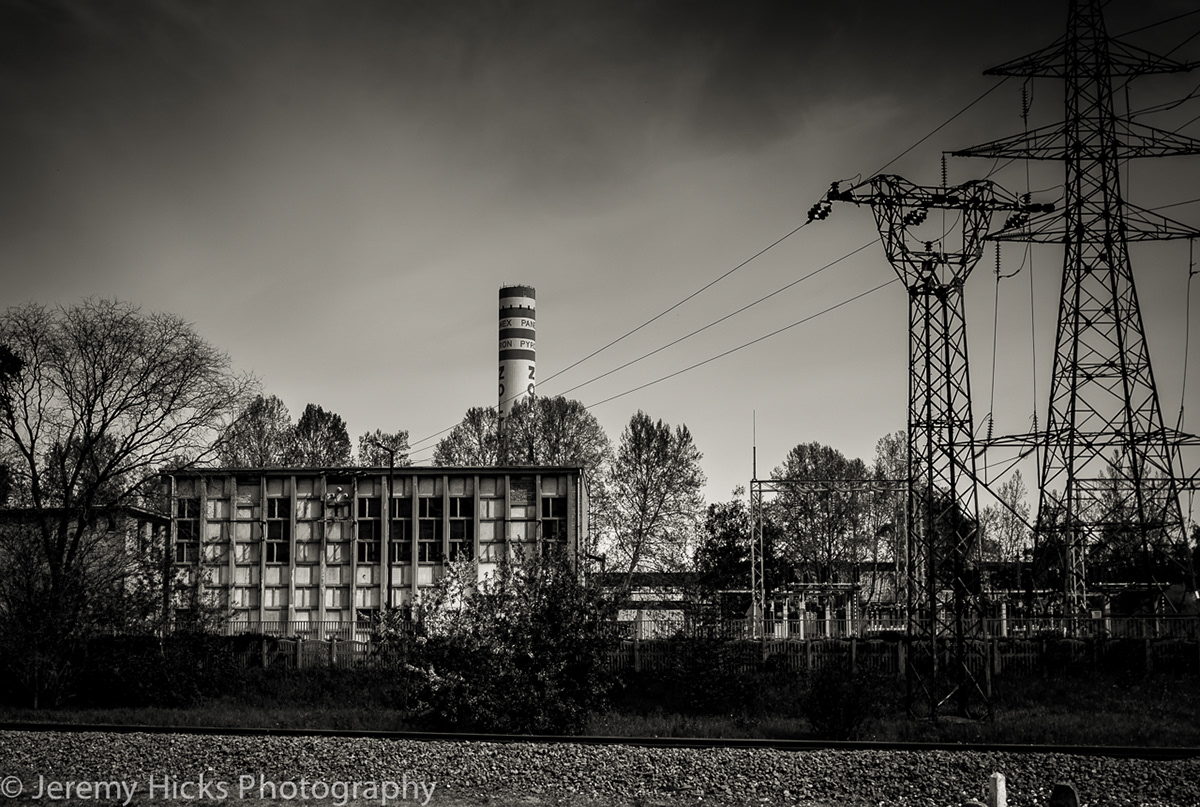
Powerstation, Hungary
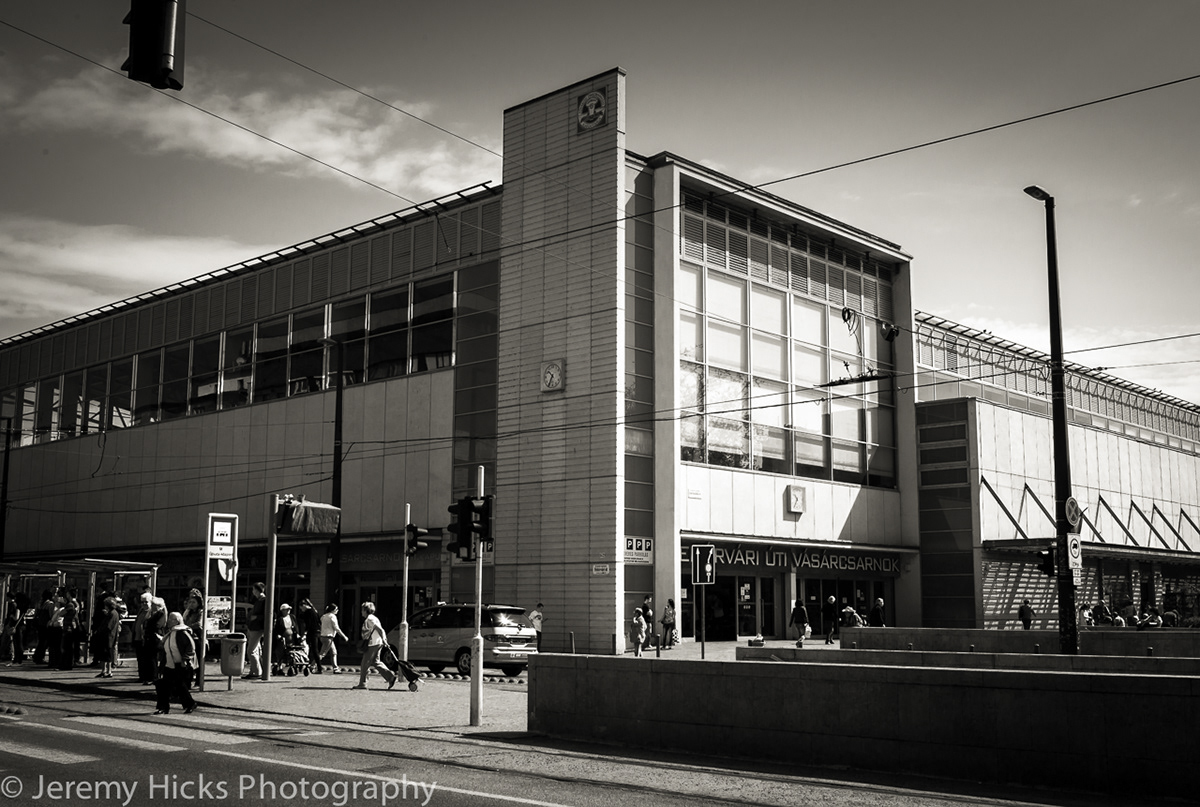
Constructivism? Soviet? Shopping Centre Budapest.
